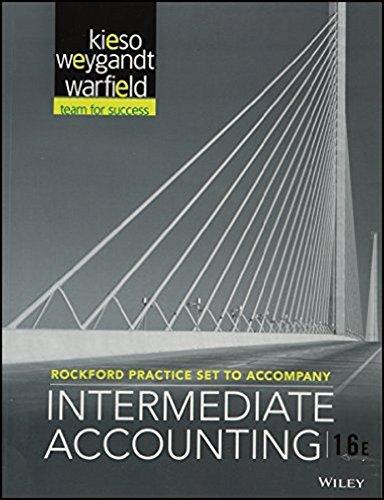Question
I am stuck on how to do the input worksheet and Balance sheet. The rest I can figure it out. The Basic Requirements 1)An input
I am stuck on how to do the input worksheet and Balance sheet. The rest I can figure it out.
The Basic Requirements
1)An input worksheet - this entire worksheet is devoted to all your hard-coded numbers and information - the rest of your model should be running with functioning formulas, no hard-coded numbers or errors.
For this, our teacher just wants us to put all the information, such as interest and bank rates, for the financial statements that are going to be used.
2)Income Statement - run by formulas, on its own worksheet, for at least the next 10 years
3)Balance Sheet - run by formulas, on its own worksheet, for at least the next 10 years
4)Cash Flow Statement - run by formulas, on its own worksheet, for at least the next 10 years
5)Project Ratios - run by formulas, on its own worksheet, for at least the next 10 years
a.This will help with your analysis of the project's validity.
b.Examples: ROI, ROE, Debt-to-Equity, any other ratios you feel are important
a.Should the company move forward with this project? Is it a smart financial decision?
b.Are there any areas of concern? Or areas that if adjusted could be better for the company's bottom line?
If the project is not viable and shouldn't be pursued, what are the major reasons why the company should not move forward with the project?
Important notes to consider:
Use straight line depreciation over the life of the asset.
Use the current Bank of Canada Prime borrowing rate as your interest rate for all debt financing, and maintain that same rate for all of your analysis.
Did you taking into account inflation over the next 10+ years?*Most companies use CPI (Consumer Price Index) as a peg for their inflation rates.
Did you take into account tax? The company is operating in Alberta that has a combined Provincial and Federal tax rate of 27%.Assume all tax is due at the end of the fiscal year and there is no accrual. You are not operating as a small business, therefore, there are no tax advantages.
The Project
New Ice Hockey Arena for the Calgary Flames (Calgary, AB)
Main purpose of the new arena will be to house our NHL team the Calgary Flames.When the Calgary Flames are not playing, the arena will be used for other attractions such as concerts or trade shows. The new arena would be a staple landmark and help in Calgary's bid for the 2026 Winter Olympics. This is a real life proposal from the City of Calgary that currently exists, please feel free to do further research around the offer.The Flames ownership rejected the offer...but was that actually the right decision to make?
Projected Capital Cost for the new arena: $555 Million Canadian
Asset Life = 35 Years
Cost of new arena to be split 3 ways equally - Municipal Government, Flames Owners, Arena Users (ticket surcharge for hockey or other events)
You will model this from the position of Calgary Flames owners, meaning that 2/3 of the project cost will be put up by you, the other 1/3 will be covered by the City of Calgary, but they would hold a 1/3 ownership interest in the property.The 2/3 capital cost will be from 100% debt financing. Only half of which will only receive offsetting revenue (ticket surcharge).
Total construction time is 1 year, then the arena will be ready to host events, earn revenue, and start depreciation.
Assume the Calgary Flames have 40 home games annually (build the model conservatively - meaning any post season income is extra)

Step by Step Solution
There are 3 Steps involved in it
Step: 1

Get Instant Access to Expert-Tailored Solutions
See step-by-step solutions with expert insights and AI powered tools for academic success
Step: 2

Step: 3

Ace Your Homework with AI
Get the answers you need in no time with our AI-driven, step-by-step assistance
Get Started


